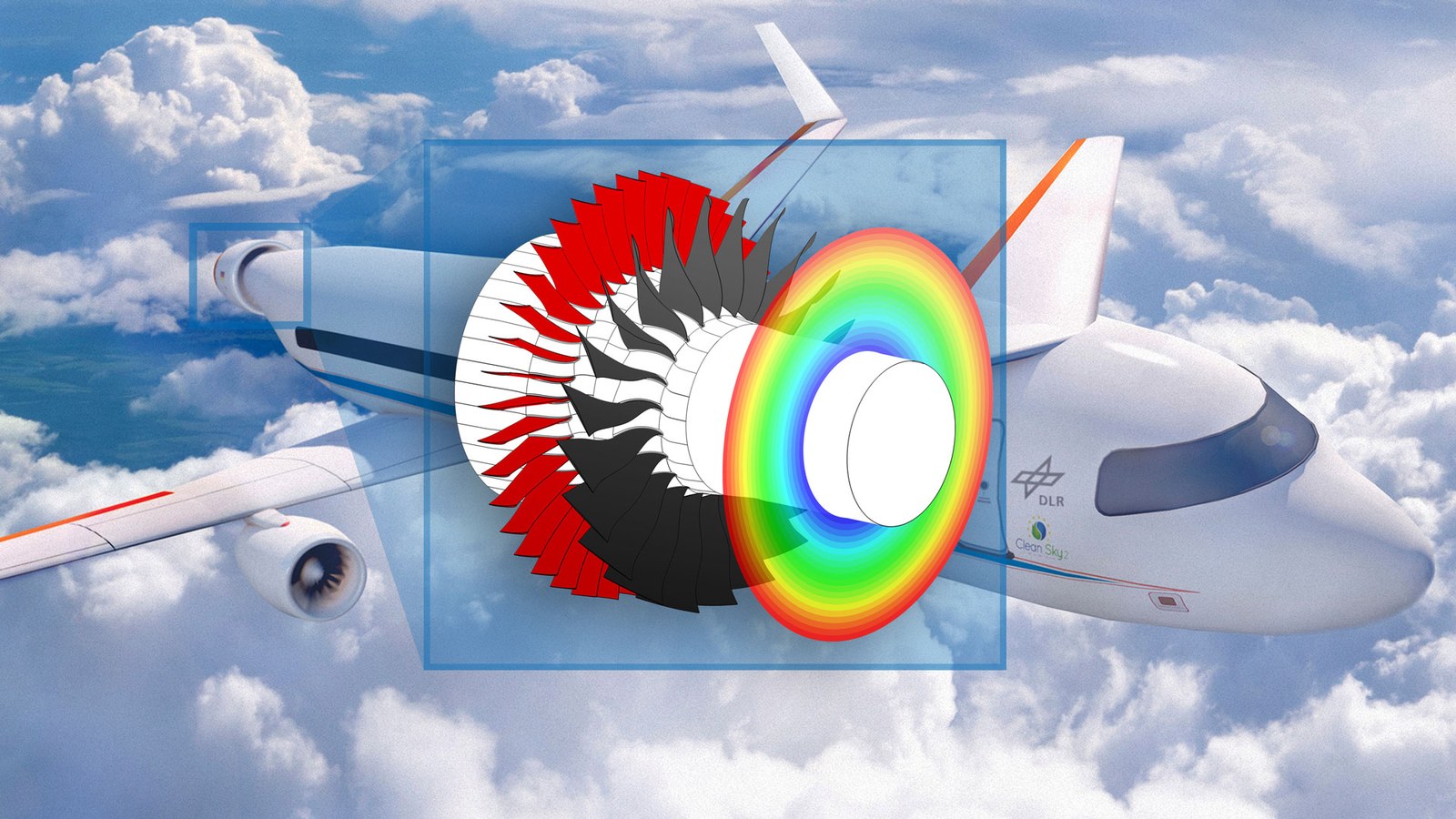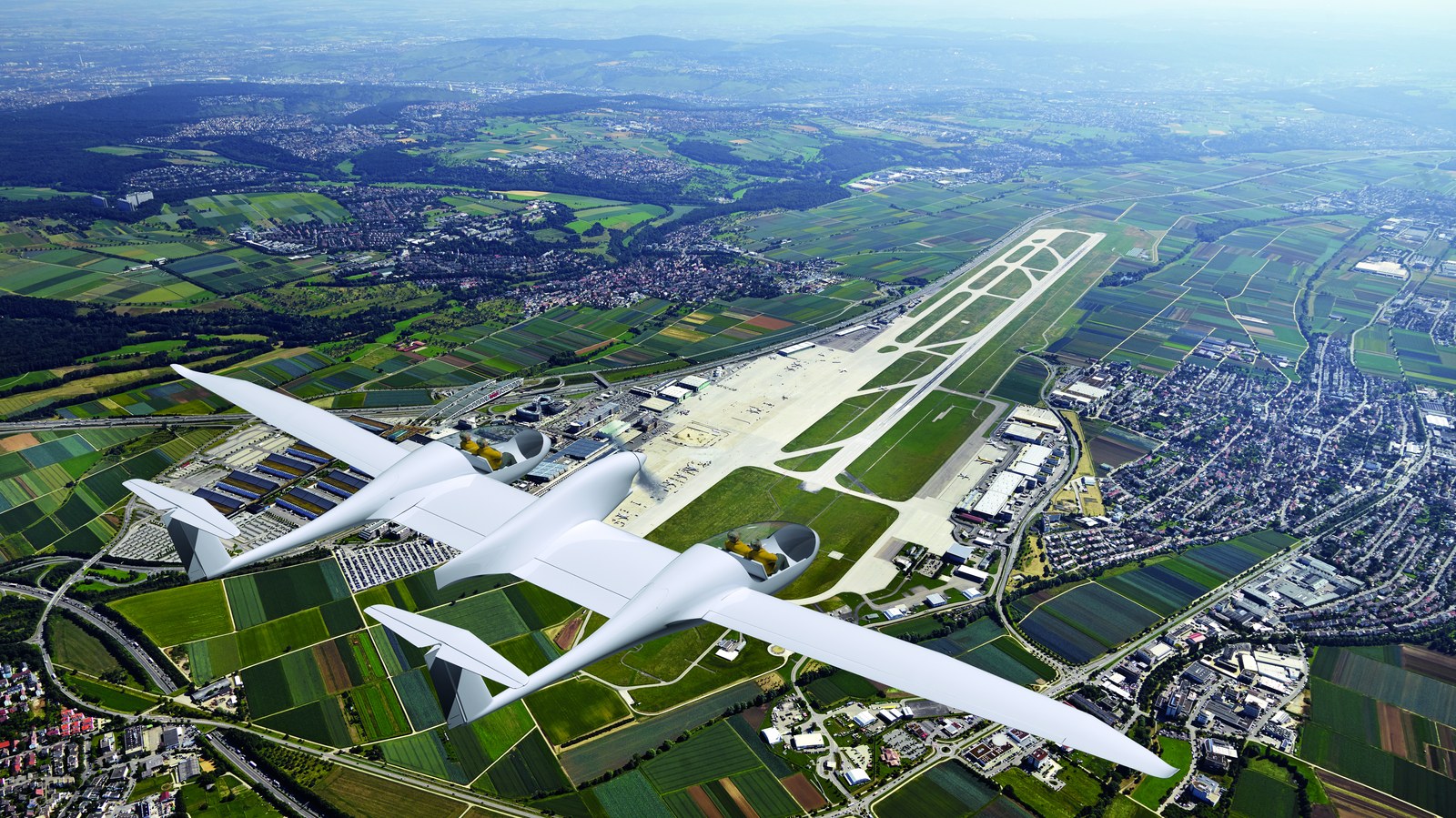Innovative engine systems are changing air transport



In order to address the challenges of environment-friendly and efficient air transport, researchers at the DLR Institute of Propulsion Technology are investigating and developing new engine technologies and propulsion concepts for aviation. Over recent years, aeronautics researchers have increasingly been focusing on new systems, such as electric propulsion systems.
“However, due to the current power and range requirements, gas turbines are set to dominate for the foreseeable future, at least in the medium- and long-haul segments,” says Reinhard Mönig, Director of the Institute of Propulsion Technology, summing up the current technology. One solution for supporting new technological developments and aircraft configurations may be partially-electric systems, referred to as hybrid propulsion systems. “In the long term, this could help to make flying more efficient and greener,” explains Mönig.
Researchers are currently working on new architectures with electrically powered or distributed engines. These are installed on the aircraft in such a way that they ingest the fuselage boundary layer. This reduces the momentum of the inflowing air and improves the efficiency of the system. However, this disturbs the inflow, which adversely affects the aerodynamic performance of the engine and presents the researchers with structural and mechanical challenges.
The Clean Sky 2 aeronautics research programme
Technological developments relating to environment-friendly air transport are to be decisively advanced between 2014 and 2024 as part of the European Union’s Clean Sky 2 aeronautics research programme. DLR is a founding member of Clean Sky 2 and leads its technology assessment efforts. As part of the Hyper-F partnership, the Institute of Propulsion Systems is coordinating work packages for the development of design and evaluation methods, which include the preliminary design of the aircraft, the entire operating cycle of the engine, the fan design (the fan generates the thrust), aeroacoustics, aeroelasticity and structural mechanics.
The project will be funded by the European Union’s Horizon 2020 programme over a period of three-and-a-half years. The researchers will investigate the potential of boundary layer-ingesting propulsion systems in collaboration with other DLR institutes and international research and industry partners. In terms of the technology, the researchers are already looking at 2035 and beyond. The key areas of focus for the project are the interaction between unsteady airflow and fan design, the acoustics and structural mechanics, and the performance and operating characteristics of the entire propulsion system.
In the process, the researchers are analysing both conventional engines with boundary layer ingestion and configurations with a rear-mounted fan that is driven by two engines mounted beneath the wings. Power is transferred electrically from the engines to the boundary layer-ingesting fan. This allows the researchers to not only investigate the potential of electric power transmission for aviation in conjunction with boundary layer-ingesting propulsion systems, but also to compare them with conventional propulsion systems.
Interdisciplinary cooperation
“Due to the high level of integration into the airframe, the cross-disciplinary cooperation between the propulsion system and aircraft designs will be further enhanced and corresponding interfaces and areas of expertise will be developed,” says Rainer Schnell, the coordinator of DLR’s Hyper-F activities – underlining the collaborative nature of the project as well as pointing out one of its challenges. The findings will be used in future projects to evaluate the efficiency of new, highly-integrated aircraft. This will allow the researchers to focus their investigations on the latest technological trends. “In order to be able to play an active role in shaping the future of air transport, we need to be researching tomorrow’s propulsion systems today,” says Reinhard Mönig. He knows that his Institute is well placed to meet the challenges presented by the next generation of propulsion systems.
